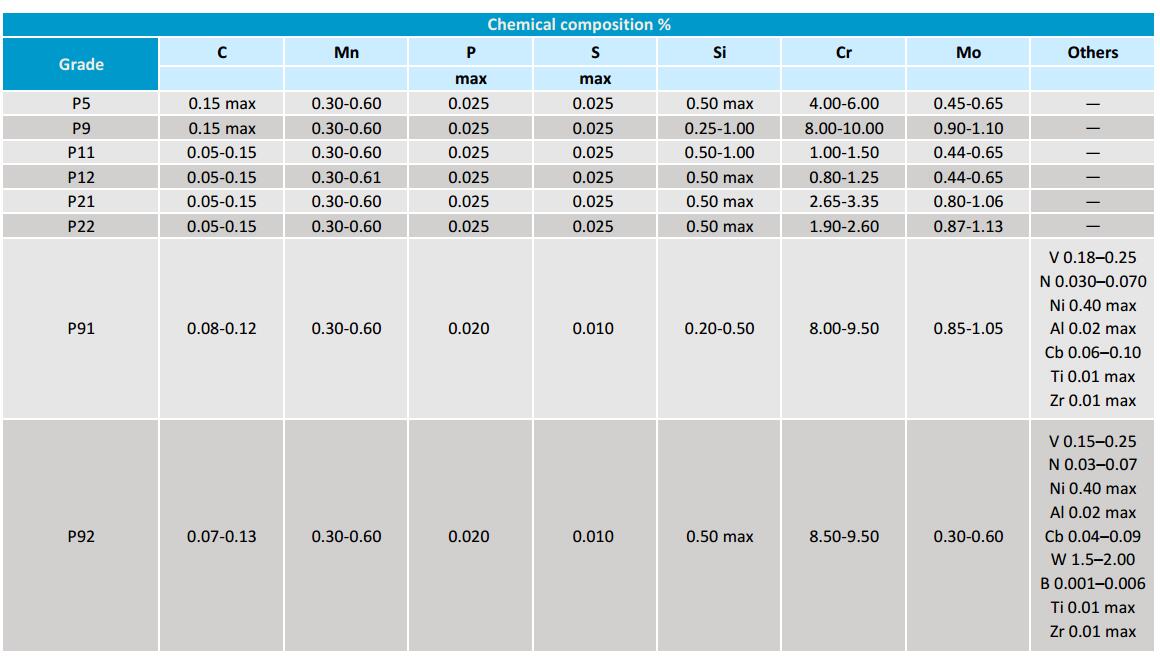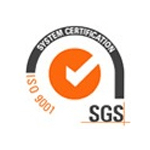Boiler industry, heat exchanger, power station, high pressure and super high pressure vessel consumption of the most alloy tube what?

At present, ASTM A335 pipe (P9/P11/P22/P91 class pipe) is the most widely used pipe in boiler, heat exchanger, power station, high pressure and ultra-high pressure vessel in the market. These pipes are also one of the best-selling products of our company.
How much do you know about ASTM A335 pipe? And what is the most featured grades in this standard?
Let’s learn more about these pipes.
1、What is ASTM A335 pipe 2、Standard specification 3、Featured Grades 4、Referred standards to manufacture this pipe 5、Raw steel material that used for the production 6、Tests involved 7、Things you need to notice when placing an order
What is ASTM A335 pipe? We also call ASTM A335 pipe as ASME S/A335 Chrome-Moly pipe, it is a type of seamless pipe could be used in high temperature environments of 540 – 750 °C.
The A335 pipes are generally called chrome moly pipe as they have a high level of Chromium and Molybdenum presence in it. While Molybdenum increases the overall strength, resistance, elasticity, hardenability and overall quality, moly ensures that the material is more resistant to softening, restrains the growth of grains and lessens the chances of embrittlement. It is the single additive that is responsible for the increase in high temperature resistance and it also improves the corrosion resistance to steel.
Key Elements Chromium for this pipe Chromium is a key component that is used in the manufacture of stainless steel. If the chromium levels are above 12%, it can be classified as stainless steel. The oxidation resistance potential of chrome is irreplaceable even in elevated temperatures. The hardness, tensile and yield strength is better at standard temperatures. Due to the composition of the material, it is ideal to be used in power plants, refineries, petro-chemical plants and other oil field services when there is transportation under high temperatures and pressures involved.
ASTM A335 Standard Specification and Scope In ASTM international associates defines: “ASTM A335 is the standard specification for seamless Ferritic Alloy-Steel Pipe for High Temperature Service.” This specification covers nominal wall and minimum wall thickness pipe that with alloy material and manufactured in seamless type. The pipe under this specification shall be suitable for bending, flanging, and all the other similar processing and formations. Although it shall be good for fusion welding.
Therefore, ASTM A335 pipe material also could be used to manufacture pipe fittings like elbow, tee, reducers etc.
A335 Pipe Chemical Composition
ASTM A335 Mechanical Properties
Referred standards ASTM a. ASTM A999/ A999M, Standard specification for common requirements for stainless and alloy steel pipe b. ASTM A92, Hardness test methods for steel materials c. E213, Instructions and practice for ultra sonic testing of steel pipe and tube d. E309 Eddy-Current Examniation methods for steel pipe products e, E381, Inspection methods for steel bars, beams, profiles, billets and forgings. f, E527, Numbering metals and alloys practices g, E570, Instructions for flux leakage examniation of ferromagnetic steel pipe products
Nominal Pipe Size ASME B36.10M dimensions standard for welded and seamless steel pipe
Raw steel material that used for the production Pipe material shall be either hot finished or cold drawn with the related heat treatment required for different grades. For Grade P2 and P12 the steel should be manufactured by coarsegrain melting procedures.
Featured Grades P9, P11, P22, P91 pipes This chrome moly pipe featured grades are ASTM A335 P9, P11, P22, P91, so also it could be called as P Grade pipe in some cases.
P11 pipe, P22 pipe and P91 pipes are used in power industry and petro-chemical plants, meanwhile, P5 and P9 pipe generally find usage in refineries.
ASTM A335 P91 pipes – High Pressure Boiler Pipes It shall be noted that, ASTM A335 Grade P91 pipe is a good grade pipe applied for high pressure boiler. And P91 pipe is ideal when it comes to bending, flanging or when it is used in similar operations such as welding. The material of steel should stick to the composition of chemicals, tensile property and the requirements of hardness. ASTM A335 P91 alloy steel pipe and high pressure boiler pipes are the two variants available and the range is dependent based on the size, which is solely based on the usage. The length of the pipe will be subject to hydrostatic test and there will also be a non-destructive examination based on the specifications.
As a result, The chrome moly pipe finds high usage in power generation industry and petrochemical industry owing to its resistance to corrosion, tensile strength, strength for high temperature owing to its cost-effectiveness.
Tests involved Some of the common tests that are done include transverse and longitudinal tension tests, flattening tests, hardness test and bend test. In case of material heat test that is done in a blast-furnace, it will be done on 5% of the pipes manufactured from each lot.
In case of the diameter exceeding NPS 25, the diameter to wall thickness ratio should typically be 7.0 or lesser than it. In case of NPS 10 and thicker pipes, the flattening test is done only when the purchaser approves of it.
Things you need to notice when placing an order When you send an inquiry of before place the order for ASTM A335 pipe, below specifications shall be verified: a. Length per piece and the quantity (Specified in feet, meters or pieces) b. Material Name (Seamless alloy steel pipe) c. Grade (P5, P9, P11, P22, P91 pipe etc) d. Manufacturing types (hot finished seamless or cold drawn seamless) e. Size to described as below ways: 1. NPS and Schedule Number (According to ASME B36.10, for example NPS 7 inch and Sch 40) 2. OD or ID and nominal or minimum wall thickness (inch or mm)
Classification navigation:
1、Alloy steel pipe 2、Stainless steel tube 3、Stainless steel welded pipe 4、Reducing pipe
5、High Pressure Thick Wall Pipe Fitting 6、Elbow 7、Flange 8、Spigot Pipe Fitting
9、Tee 10、Tube Cap 11、Pipe Fitting















